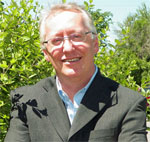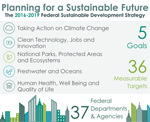Visit https://www.naylornetwork.com/cww-nwl/articles/index-v2.asp?aid=390227&issueID=47523 to view the full article online.
|
Visit https://www.naylornetwork.com/cww-nwl/articles/index-v2.asp?aid=390890&issueID=47523 to view the full article online.
|
Visit https://www.naylornetwork.com/cww-nwl/articles/index-v2.asp?aid=389526&issueID=47523 to view the full article online.
|
Visit https://www.naylornetwork.com/cww-nwl/articles/index-v2.asp?aid=389699&issueID=47523 to view the full article online.
|
Visit https://www.naylornetwork.com/cww-nwl/articles/index-v2.asp?aid=389912&issueID=47523 to view the full article online.
|
Visit https://www.naylornetwork.com/cww-nwl/articles/index-v2.asp?aid=389937&issueID=47523 to view the full article online.
|
The demonstration project evaluated a range of sampling methods and supporting techniques for tackling lead in drinking water in Alberta Province. It concluded that a risk assessment/management approach would be better suited to tackling the lead in drinking water problem than the sampling protocols currently recommended by Health Canada. This article is a preview of the paper to be published next month in the Journal of Water Supply: Research and Technology – AQUA. Visit https://www.naylornetwork.com/cww-nwl/articles/index-v2.asp?aid=389508&issueID=47523 to view the full article online.
|
Much has been written about the lead in drinking water "disaster" in Flint, Michigan. To save money, the municipality switched their water supply source to a local river and omitted to dose the corrosion inhibitor that had been added to the previous supply from Detroit, resulting in elevated lead at the tap. This article concludes that water safety planning, allied to appropriate sampling and investigative techniques will go a long way to averting a similar "disaster" in Canada. Visit https://www.naylornetwork.com/cww-nwl/articles/index-v2.asp?aid=389705&issueID=47523 to view the full article online.
|
The founding members of The Low Carbon Partnership are Climate Smart, Sustainability CoLab, The Natural Step, and QUEST - established organizations with deep roots in communities and local economies across the country. Collectively, the partners reach more than 1,200 businesses generating $100 billion in revenue. They’re also in direct contact with 200 communities. Visit www.lowcarbonpartnership.ca to view the full article online.
|
Visit https://www.naylornetwork.com/cww-nwl/articles/index-v2.asp?aid=389902&issueID=47523 to view the full article online.
|
Visit https://www.naylornetwork.com/cww-nwl/articles/index-v2.asp?aid=389531&issueID=47523 to view the full article online.
|
Visit https://www.naylornetwork.com/cww-nwl/articles/index-v2.asp?aid=389628&issueID=47523 to view the full article online.
|
Visit https://www.naylornetwork.com/cww-nwl/articles/index-v2.asp?aid=389695&issueID=47523 to view the full article online.
|
Visit https://www.naylornetwork.com/cww-nwl/articles/index-v2.asp?aid=389860&issueID=47523 to view the full article online.
|
Visit https://www.naylornetwork.com/cww-nwl/articles/index-v2.asp?aid=389870&issueID=47523 to view the full article online.
|
POLIS Project recently released a new report Illumination: Insights and Perspectives for Building Effective Watershed Governance in B.C. is a forward looking and in-depth analysis of perspectives, emerging trends and opportunities associated with watershed governance and water sustainability in British Columbia. It specifically highlights capacity needs and practical tools required to implement watershed governance across B.C. but also shows a model for the legal and institutional evolution of water, watersheds and governance across Canada—and indeed globally.
First Nations across the province demonstrate leadership around watershed governance, and recent Supreme Court decisions affirm First Nations’ critical role in resource decision-making. The future evolution of watershed governance is clear and it will centrally involve co-governance between the Province and First Nations in a specifically local context. Numerous regional collaborative watershed initiatives are starting down this path by leading planning, monitoring, and stewardship projects that are changing the ways society interacts with and stewards fresh water.
This research confirms that although a genuine window of opportunity exists to kick-start a world-class watershed governance regime in British Columbia, considerable knowledge and capacity gaps still exist for fully turning the concept into practice. Through an extensive investigation involving interviews, surveys, and a First Nations Roundtable, the Illumination study provides critical insights into the question: "What is needed NOW to make watershed governance work in British Columbia?"
Key findings and insights offered in the report include:
"Decision-makers, communities, rights holders, licensor holders, and stakeholders cannot operate in silos," says Natasha Overduin, Watershed Governance Project Manager and Research Associate with the POLIS Water Sustainability Project. "Rather, they must develop a collective, shared vision for their local watersheds and how to better manage resources for the benefit of users, local economies and nature to achieve long-term watershed health."
|
Visit https://www.naylornetwork.com/cww-nwl/articles/index-v2.asp?aid=389909&issueID=47523 to view the full article online.
|
|
EPA
Since the U.S. Environmental Protection Agency (EPA) launched the WaterSense program 10 years ago, Americans have saved $32.6 billion in water and energy bills and 1.5 trillion gallons of water, which is more than the amount of water needed to supply all of the homes in California for a year. Visit https://www.epa.gov/newsreleases/10-years-watersense-saved-more-trillion-gallons-water-billions-utility-bills to view the full article online. |
|
Water Online
Firefighters in a Colorado town faced a water infrastructure challenge during a kitchen fire this month that had fatal consequences. The firefighters from Aurora, CO, were "forced to pump water from fire trucks when a malfunctioning water pipe failed to provide what they needed," The Denver Post reported. Visit http://www.wateronline.com/doc/one-dead-after-faulty-water-pipe-complicates-fire-rescue-0001?vm_tId=1935301&user=8716093d-9883-4414-9585-e4e29dddad77&utm_source=et_10759433&utm_medium=email&utm_campaign=WOL_06-29-2016-Best-Of-June&utm_term=8716093d-9883-4 to view the full article online. |
|
Water Online
Donald Trump has had a lot to say about the Mexican border, but he has yet to speak at length on what is arguably one of the trickiest and most important border issues: water. As the presumptive Republican presidential nominee, Trump has proposed to build a wall along a large part of the U.S.-Mexico border. He says he will compel Mexico to pay for it. Visit http://www.wateronline.com/doc/donald-trump-quiet-on-water-issues-with-mexican-border-plan-0001?vm_tId=1935300&user=8716093d-9883-4414-9585-e4e29dddad77&utm_source=et_10759433&utm_medium=email&utm_campaign=WOL_06-29-2016-Best-Of-June&utm_term=8716093d-988 to view the full article online. |
|
Water Online
The company confirmed "that it has agreed to pay for a treatment facility to re-use water for evaporative cooling in its Prineville, OR, data centers. By recycling water for Apple instead of taking it straight from the tap, the city says its new facility will save nearly 5 million gallons a year," The Oregonian reported this month. Visit http://www.wateronline.com/doc/apple-enters-the-wastewater-business-0001?vm_tId=1936657&user=8716093d-9883-4414-9585-e4e29dddad77&utm_source=et_10759433&utm_medium=email&utm_campaign=WOL_07-07-2016&utm_term=8716093d-9883-4414-9585-e4e29dddad77&utm_content to view the full article online. |
|
Water Online
Water and wastewater municipalities are on a constant search for new tools. At the mercy of developers, they hope that the latest, most efficient, most cutting-edge technologies and methods will arrive to help them improve practices and cut down on costs. Visit http://www.wateronline.com/doc/dc-water-develops-its-own-future-with-open-innovation-0001?vm_tId=1936679&user=8716093d-9883-4414-9585-e4e29dddad77&utm_source=et_10759433&utm_medium=email&utm_campaign=WOL_07-07-2016&utm_term=8716093d-9883-4414-9585-e4e29dd to view the full article online. |
|
CTV News
The water supply of about 69,000 people has been affected by an oil spill in the North Saskatchewan River, the province’s Water Security Agency says. Visit http://saskatoon.ctvnews.ca/oil-spill-in-north-sask-river-affecting-water-supply-of-69-000-people-1.3002015 to view the full article online. |
|
Muskoka Region
An emergency response simulation has shown that Muskoka’s water systems can recover from a targeted attack. Visit http://www.muskokaregion.com/news-story/6775127-mock-emergency-session-hypothesizes-muskoka-water-plants-attacked-by-terrorists/ to view the full article online. |
|
Sarnia Observer
Staff at the water treatment plant serving Sarnia and five other communities will keep an eye out this summer for blue-green algal blooms in Lake Huron, over its intake pipe. Visit http://www.theobserver.ca/2016/07/20/new-blue-green-algae-policies-in-place-at-water-treatment-plant to view the full article online. |
|
Vancouver Sun
The Vancouver-headquartered company that has already carved a niche out of harvesting phosphorus from the sewage treatment process to make fertilizer is betting it’s on the path to bigger business with its latest installation. Visit http://vancouversun.com/business/local-business/vancouvers-ostara-aims-to-harvest-from-municipal-waste-rather-than-mining-phosphorous to view the full article online. |





















